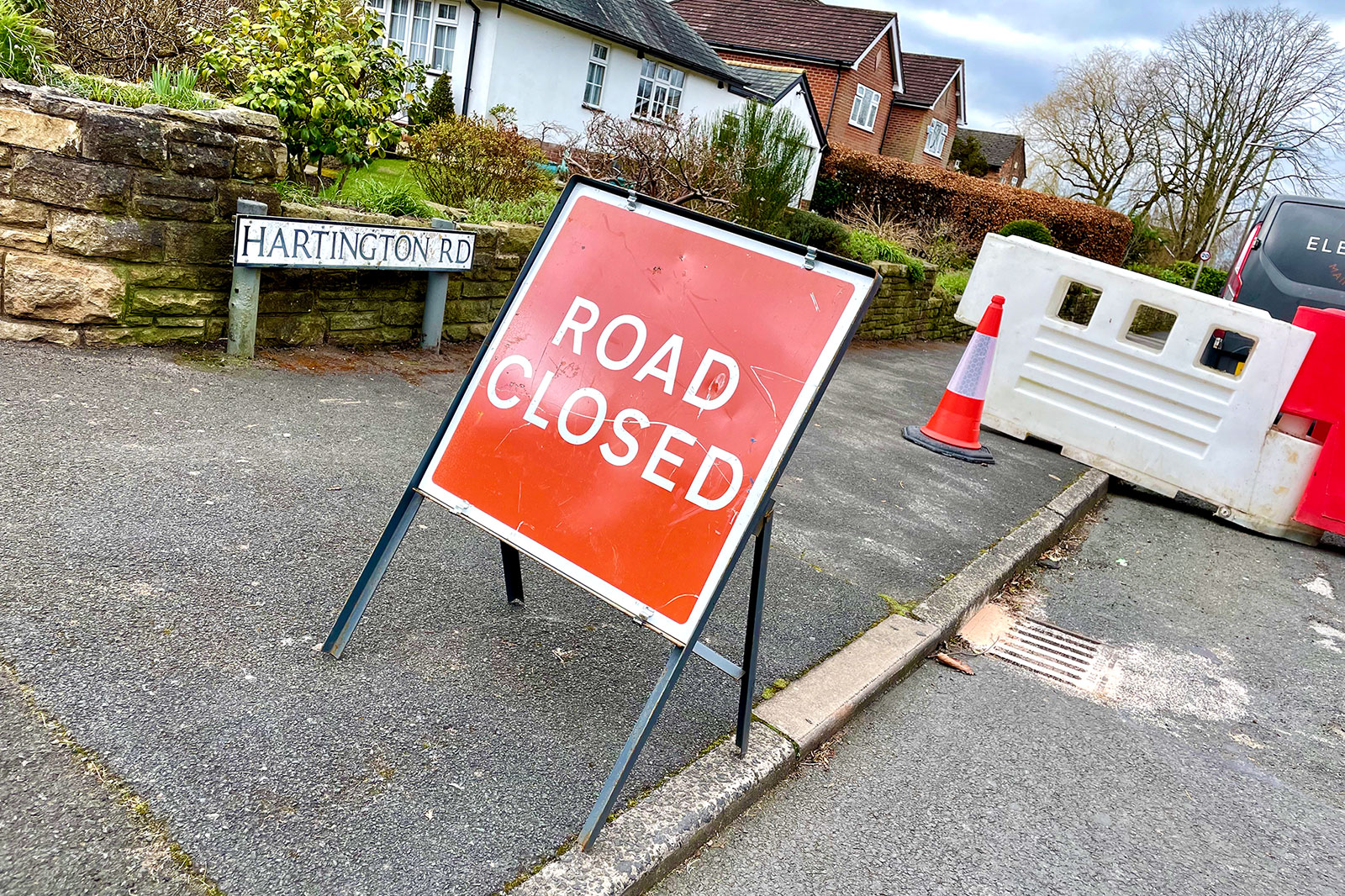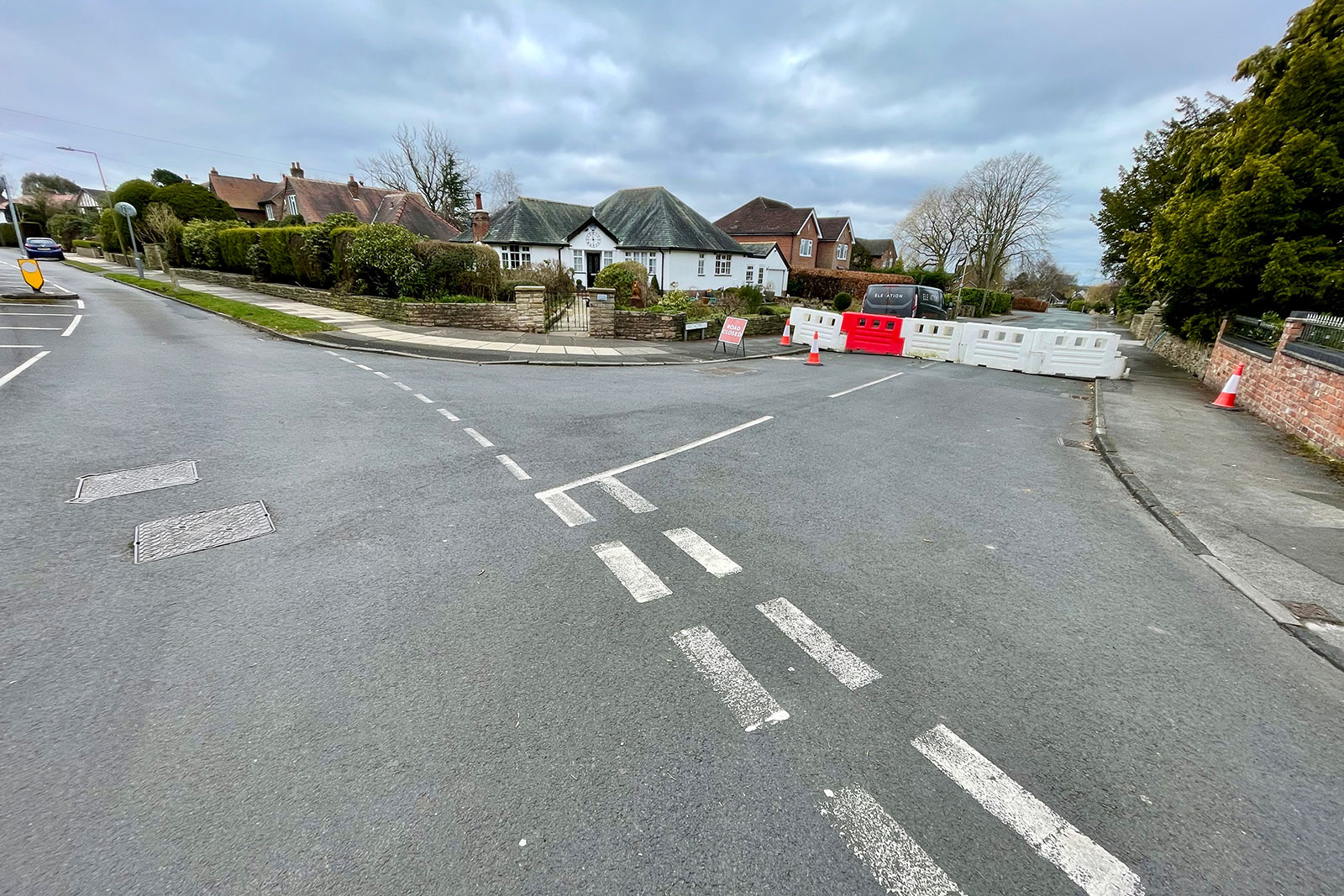
Stockport Council has trialled a single closure point to stop queue-jumping on a residential road off the A6 at the High Lane — a move which, if made permanent, could also provide up to half the length of a safe cycling route along this busy travel corridor.
For six weeks from late January, the council installed temporary vehicle barriers at the junction of Park Road and Hartington Road, on the south side of the A6.
The temporary filter wasn’t pretty, nor was it brilliantly executed (in fact not really a filter as, when I visited, they’d not left any gap to cycle through without mounting the pavement), but the effect on rat-running and speeding drivers was immediate.
- Please take just a minute to support making it permanent and kick-start this desperately-needed link: complete the consultation here now – closes this Monday, 27th March






These 20 mph residential roads can provide a perfect escape route from the A6, far quieter and more pleasant for walking and far safer for cycling. And, unusually for a parallel quiet route, with almost no penalty in extra distance.
Except, because of a minority of drivers who choose to rat-run (or to put it better, queue-jump) when traffic on the A6 is queueing, often at excessive speed, the roads can all too often feel hostile themselves. I’ve personally had experiences of being cut-up and close-passed at well over 20 mph on these back roads, which is just ridiculous, and I know I’m not alone.

The area is already subject to an “access only” restriction for motor vehicles, but only between 6am and 10am on weekdays and with no enforcement. As anyone who knows the area can testify, queues on the A6 are no longer just a Weekday AM thing (weekends can even be worse, and spread longer through the day), and signs alone do nothing to stop selfish behaviour.
You’ll also know (or can imagine) how terrifying it can be to try and cycle the A6 itself, and how difficult (you might even say impossible) it is to find a reasonable alternative. No need to say more on that.

I’m sure most reading this want to see excess space on the A6 given to protected cycle lanes. Though this could be possible for much of its length, there is definitely a notable pinch-point in its width parallel to Hartington Road (see here between the old cottages, and the tight junction with Andrew Lane). I just can’t see a cycleway being feasible here. In this case, a fully-calmed Hartington Road is probably not just a good option but the only option.
What strikes me most of all with this proposal is that, for the relatively tiny cost of one set of permanent bollards — which won’t restrict any genuine access either side — up to half the distance of a cycle route between the Stockport border and the existing old Buxton Road link* would be solved (roughly 0.9 miles of 1.8 miles). Then there’s the local benefits for noise, air quality, pedestrian safety, kids playing out and crucially, the nearby primary school.
*The point where you can turn onto the beautifully quiet old, bypassed A6 towards the A555 cycleway, Hazel Grove suburbs and the new cycleway to Bramhall Park.
That’s astonishing value from one filter. Residents would still have three other separate side roads (which aren’t so productive to rat-running) providing vehicle access to the area, with an absolute maximum extra 700 metres by car mostly for those on the filtered stub of road (worth it for a much more peaceful front garden, surely).
Immediately, there’d then be a physically-calmed and protected cycle route from the Stockport boundary with Cheshire East at least into the centre of High Lane, branching out to all these residential roads and the primary school.


Connecting this onwards to Middlewood Way, the A555 and Hazel Grove (as 1,500 have so far demanded) will be more difficult, for sure, as will getting Cheshire East to ever understand just how diabolical their painted cycle lanes to and from Disley are. But it starts here — it’s a vital first piece of the puzzle.
The consultation states that the council have also gathered road survey data before and during the trial to show the effect of the closure, which it’s to be hoped reinforces the positives above.
However, none of the communication from the council (including the initial letter sent to residents) has really attempted to promote the positive benefits of a road filter like this. It’s all focused on stopping speeding and rat running, rather than opening up new active routes and a more liveable neighbourhood. I can’t understand why that is, and I worry it will have very negatively affected some opinions as a result.
If you want to see safer, more liveable neighbourhoods and a fix for cycling this part of the A6 corridor, do take just a minute to support making the closure point permanent now.

